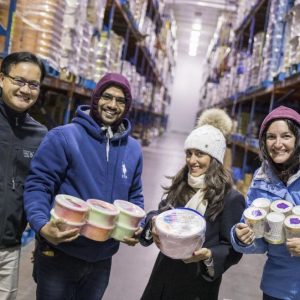
Sometimes something sweet requires serious smarts.
Arizona State University sustainability scientist Kristen Parrish’s work focuses on integrating energy-efficiency methods into the design, construction and operational processes of buildings.
Robert Wang’s expertise in thermal science includes the applications of thermoelectricity, thermal-energy storage and phase-change materials and processes.
Together they are a formidable force in the quest for … well-preserved, quality ice cream.
Their know-how is especially valuable if you have very large facilities filled with vast quantities of food that must be kept frozen under precise technical specifications to maintain its optimal attributes as an edible.
Parrish and Wang, associate professors in ASU’s Ira A. Fulton Schools of Engineering, are working on such a project with Arizona’s Salt River Project water and power utility and Viking Cold Solutions, the leading thermal-energy storage provider to the low-temperature cold-storage market.
The companies and the ASU researchers are experimenting with Viking Cold Solutions’ novel thermal-energy storage and cooling technology in the 10,400-square-foot ice cream freezer in the Bashas’ Family of Stores grocery chain’s 800,000-square-foot distribution center in Chandler, Arizona.
The benefit SRP and Bashas’ hope to reap from the project is not simply energy efficiency but also significant energy cost savings. The thermal-energy process enables Bashas’ to reduce the amount of time it has to run the facility’s conventional electrical refrigeration system during more expensive peak-load hours — that’s between 2 and 7 p.m. each day when customer demand is highest for SRP and when the cost of power is up to three times as high as during nonpeak hours.